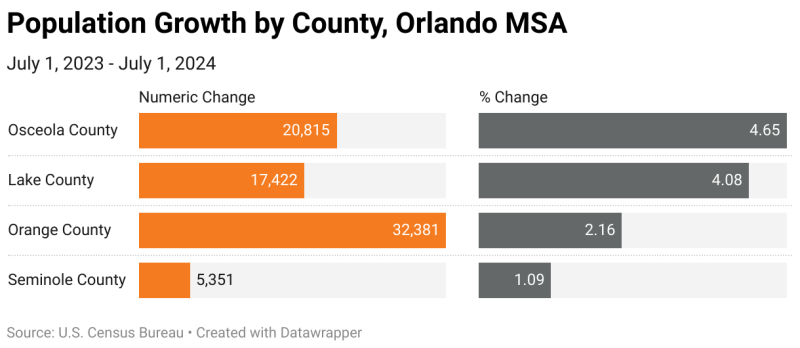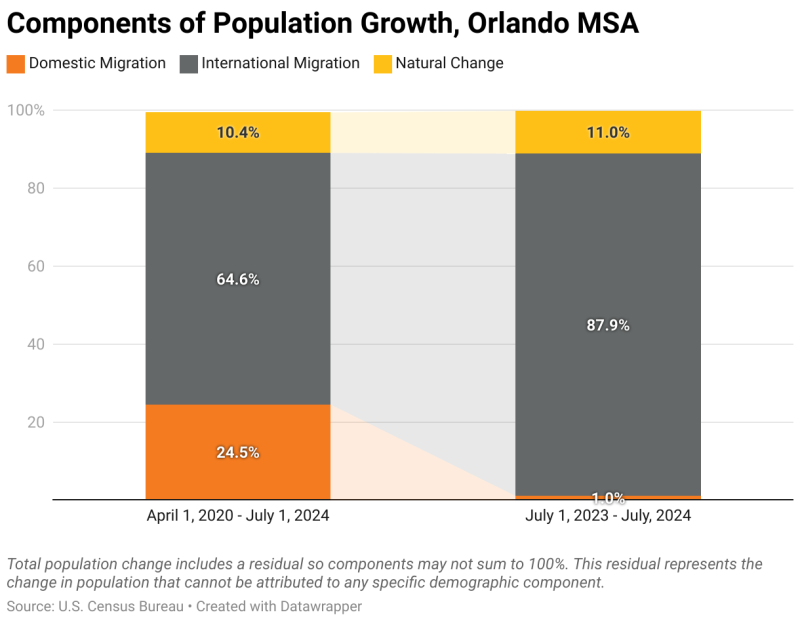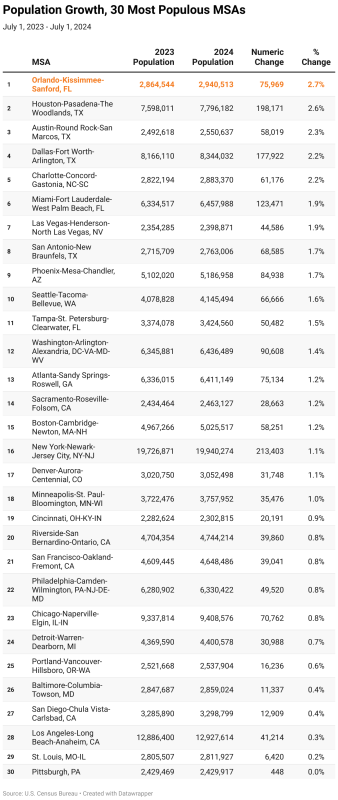In commercial real estate, few metrics are as closely watched—or as impactful—as population growth. A rising population fuels demand for office space, retail centers, multifamily housing, and infrastructure investment and development. For investors, it’s often a leading indicator of long-term market health and opportunity. The Orlando Metropolitan Statistical Area (MSA), one of the fastest-growing regions in the nation, continues to attract businesses, residents, and talent—creating both challenges and openings in its commercial sectors. In this post, we take a closer look at the Orlando MSA’s population growth and how it compares to other Florida and national markets.
As of July 1, 2024, the Orlando MSA reached a population of approximately 2,940,513, adding nearly 76,000 new residents in the prior 12 months.
That represents a 2.7% growth rate between mid‑2023 and mid‑2024—well above the U.S. metro average (~1.1%) and Florida’s statewide rate (~2.0%), placing it at the top of the leaderboard for population growth among the the 30 most populous MSAs in the country between July 1, 2023 and July 1 2024.
Orlando now ranks as the 20th largest metro area in the U.S., up from 24th in 2020, and is the third‑largest metro area in Florida behind Miami and Tampa (Wikipedia).
(Image via: News.Orlando.Org)
In 2024, all four counties that make up the Orlando MSA—Lake, Orange, Osceola, and Seminole—posted population gains. However, the pace and source of growth varied significantly across the region. Osceola and Lake County stood out nationally, ranking 11th and 23rd among the fastest-growing counties in the U.S., driven largely by domestic migration and affordability. In contrast, Orange and Seminole Counties saw a slowdown in domestic inflow compared to 2023, with both experiencing net out-migration among U.S. residents. These core counties relied more heavily on international migration to sustain their population growth, highlighting shifting preferences among movers seeking lower-cost alternatives within the broader metro area.

(Image via: News.Orlando.Org)
International migration has been a key driver, with many newcomers relocating to Central Florida counties, particularly to the Orlando/Kissimmee/Sanford MSA, including Orange County, which had the highest numeric change, and Osceola County, which had the highest percentage change.

(Image via: News.Orlando.Org)
Using the latest Census data (2024), the University of Florida forecasts that the Orlando region will be home to another one million residents by 2045.
For more information on the Orlando market and the potential for investment, contact us directly.


